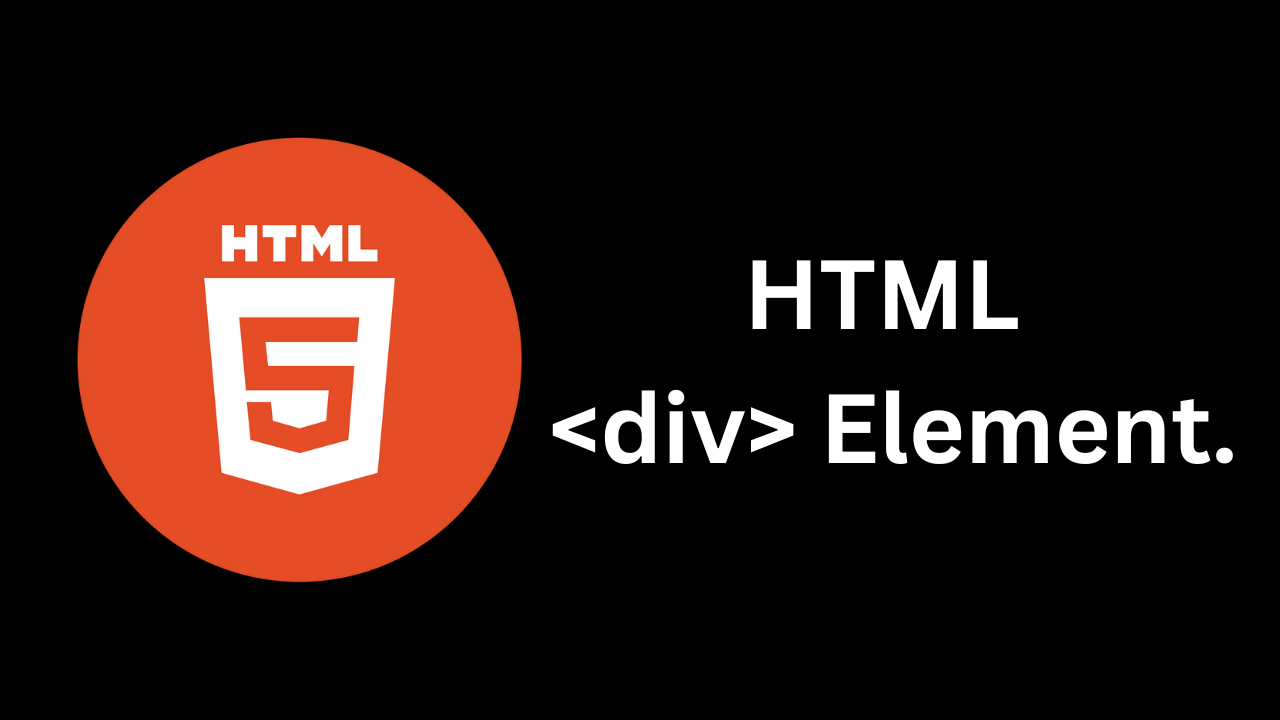Understanding the HTML <div> Element
 Shivani Patel
Shivani Patel
The HTML <div> element is a powerful and versatile tool in web development, playing a crucial role in structuring and styling web pages. As a container for grouping content, the <div> element allows developers to create layouts, apply styles, and manage complex designs efficiently. In this blog post, we will explore the purpose of the <div> element, its characteristics, usage, and best practices.
What is the <div> Element?
The <div> element stands for "division" and is a block-level element used to group together related content. It serves as a generic container that can hold other HTML elements, including text, images, forms, and other containers.
Characteristics of the <div> Element
Block-Level Element: It starts on a new line and takes up the full width of its parent container by default.
Versatile Container: It can contain any other HTML elements, making it highly adaptable for various use cases.
No Semantic Meaning: Unlike semantic elements (like
<header>,<footer>, or<article>), the<div>element does not convey any specific meaning about the content it contains.
Common Use Cases for the <div> Element
The <div> element can be employed in numerous scenarios, including:
Layout Design: Divs are often used to create sections of a webpage, such as headers, footers, sidebars, and content areas.
Styling: By applying CSS styles to a
<div>, you can control its appearance, including colors, margins, padding, and positioning.JavaScript Interactivity: Divs can be manipulated with JavaScript for dynamic content changes, animations, and interactive elements.
Example of a Basic <div> Structure
<div class="container">
<h1>Welcome to My Website</h1>
<p>This is a paragraph of text within a div.</p>
</div>
In this example, the <div> with the class "container" groups the heading and paragraph, making it easy to style them together.
Styling the <div> Element with CSS
The true power of the <div> element comes from its ability to be styled with CSS. You can manipulate its size, color, positioning, and other visual aspects to create appealing layouts.
Example of CSS Styling
<style>
.container {
background-color: #f0f0f0;
padding: 20px;
margin: 10px 0;
border: 1px solid #ccc;
border-radius: 5px;
}
</style>
<div class="container">
<h1>Welcome to My Website</h1>
<p>This is a paragraph of text within a styled div.</p>
</div>
In this example, the .container class styles the <div> to have a light gray background, padding, margin, and rounded corners.
Nesting <div> Elements
You can nest <div> elements within each other to create more complex layouts. This technique allows for better organization and separation of content.
Example of Nested <div> Elements
<div class="header">
<h1>My Website</h1>
</div>
<div class="content">
<div class="sidebar">Sidebar content</div>
<div class="main">Main content goes here</div>
</div>
<div class="footer">
<p>Footer information</p>
</div>
In this structure, the main content area is divided into a sidebar and a main section, all contained within their respective <div> elements.
Best Practices for Using <div> Elements
Use Semantic HTML When Possible: While
<div>elements are versatile, opt for semantic elements (like<header>,<footer>,<nav>, and<section>) when applicable. This improves accessibility and SEO.Limit Nesting: Avoid excessive nesting of
<div>elements, as it can lead to convoluted markup. Keep your HTML clean and readable.Class and ID Naming Conventions: Use meaningful class and ID names for your
<div>elements to improve maintainability. Consider following conventions like BEM (Block Element Modifier) for clarity.CSS Flexbox and Grid: Consider using CSS Flexbox or Grid for layout management instead of relying solely on
<div>elements. These modern techniques provide more efficient and responsive layouts.Accessibility Considerations: When using
<div>elements, ensure that any interactive content is accessible. Use appropriate ARIA roles or additional HTML elements where necessary.
Conclusion
The HTML <div> element is a fundamental building block of web development, providing flexibility in layout design and styling. While its generic nature makes it a versatile tool, it’s essential to use it judiciously alongside semantic HTML elements to enhance accessibility and improve user experience. By mastering the <div> element, you can create well-structured, visually appealing web pages that effectively communicate your content. Happy coding!
Subscribe to my newsletter
Read articles from Shivani Patel directly inside your inbox. Subscribe to the newsletter, and don't miss out.
Written by
